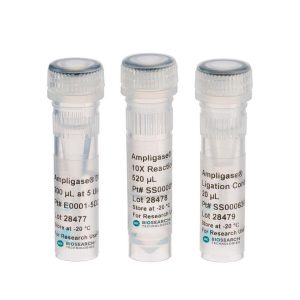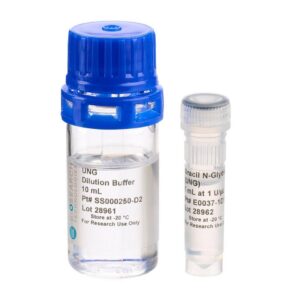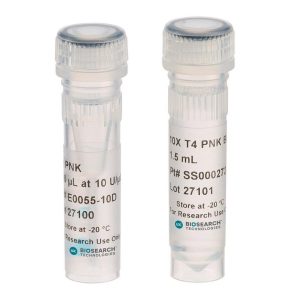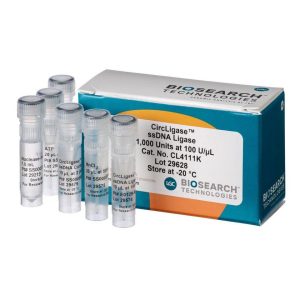Ampligase Thermostable DNA Ligase
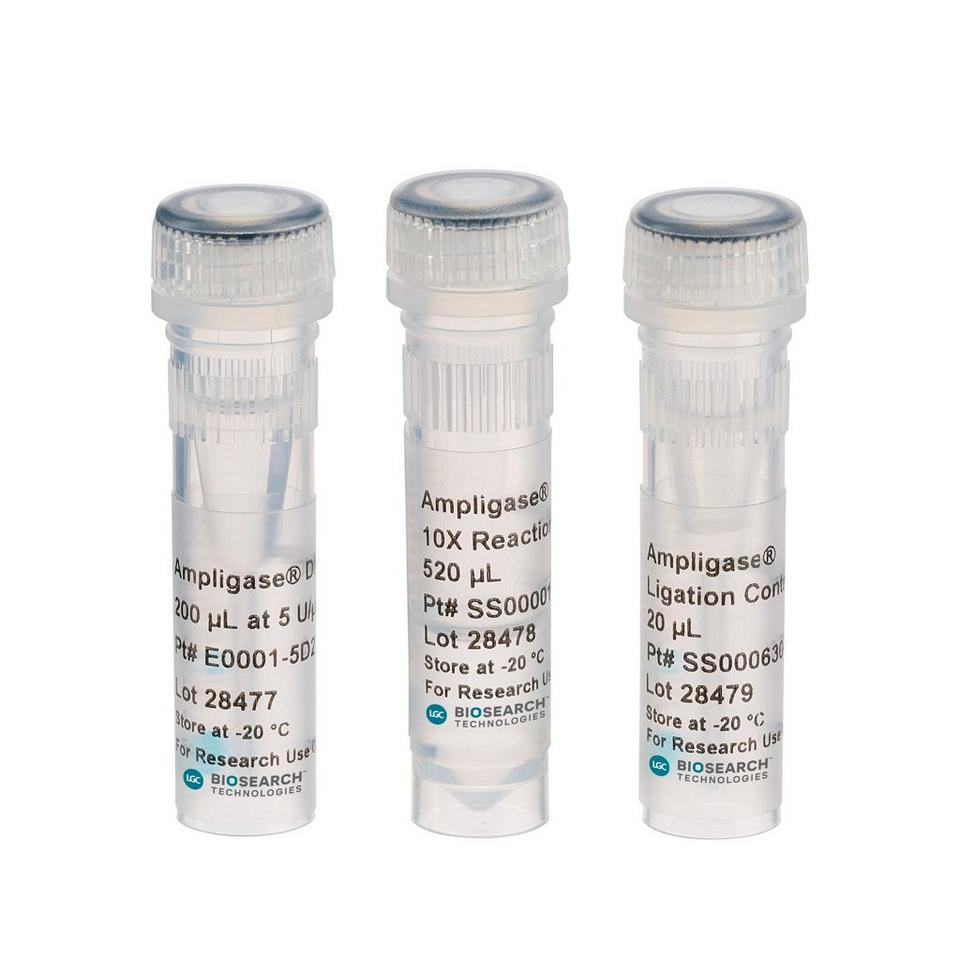
Ampligase™ DNA Ligase, 5 U/µL, 100,000 U
Highly thermostable DNA ligase for applications where ligation at high temperature is beneficial or required.
Key features
- High thermostability allows ligation using high-stringency hybridization conditions
- High specificity and stringency permits sensitive detection of SNPs
- Available in kit and “enzyme only” formats11
| Name | SKU | Size | Availability | Vendor | Price | Order | |
| Ampligase Thermostable DNA Ligase | E0001-5D5 | 100,000 U | Generally 1-2 weeks from receipt of order | LGC Biosearch Technologies - Lucigen (Epicentre) | Log in for pricing |
Product Details
Ampligase Thermostable DNA Ligase starter Kit (Item ID A8101) includes Ampligase Thermostable DNA Ligase, 10X Ampligase Reaction Buffer, and a DNA ligation control. All other Ampligase Thermostable DNA Ligase Kits include Ampligase DNA Ligase and 10X Ampligase Reaction Buffer.
Product information
Ampligase™ Thermostable DNA Ligase catalyses NAD-dependent ligation of adjacent 3´-hydroxylated and 5´-phosphorylated termini in duplex DNA structures that are stable at high temperatures. Derived from a thermophilic bacterium, the enzyme is stable and active at much higher temperatures than conventional DNA ligases. Its half-life is 48 hours at 65°C and greater than 1 hour at 95°C. Ampligase DNA Ligase has been shown to be active for at least 500 thermal cycles (94°C/80°C) or 16 hours of cycling. 10 This exceptional thermostability permits extremely high hybridization stringency and ligation specificity. Ampligase DNA Ligase has no detectable activity in ligating blunt-ended DNA and has no activity on RNA or RNA:DNA hybrids.
Applications
- Ligation amplification (Ligase Chain Reaction, LCR) 1-7
- Repeat Expansion Detection (RED) 7
- Simultaneous mutagenesis of multiple sites 8,9
- Other ligation-based detection methods
References
- Landegren, U. et al. (1988) Science 242, 229.
- Wu, D.Y. and Wallace, R.B. (1989) Genomics 4, 560.
- Barany, F. (1991) Proc. Natl. Acad. Sci. USA 88, 189.
- Birkenmeyer, L. and Armstrong, A.S. (1992) J. Clin. Micro. 30, 3089.
- Dille, B.J. et al. (1993) J. Clin. Micro. 31, 729
- Nakazawa, H. et al. (1994) Proc. Natl. Acad. Sci. USA 91, 360.
- Sirugo, G. and Kidd, K. (1995) Epicentre Forum 2(3), 1.
- Moore, D. and Michael, S. (1995) Epicentre Forum 2(4), 4.
- Rouwendal, G.J. et al. (1993) BioTechniques 15, 68.
- Schalling, M. et al. (1993) Nature Genetics 4, 135.
- Hardenbol, P. et al. (2003) Nature Biotechnology 21, 673.
Resources
SDS
Manuals and User Guides
You may also like
-
-
Uracil N-Glycosylase (UNG)
UG131K | LGC Biosearch Technologies - Lucigen (Epicentre)Cleave any DNA containing dUTP in place of dTTP
Log in for pricing -
T4 Polynucleotide Kinase, Cloned
E0055-10D3 | LGC Biosearch Technologies - Lucigen (Epicentre)Log in for pricing -
CircLigase™ II ssDNA Ligase
LGC Biosearch Technologies - Lucigen (Epicentre)ATP-independent, non-catalytic thermostable ligase that catalyzes the intramolecular ligation (i.e. circularization) of ssDNA templates
Log in for pricing

